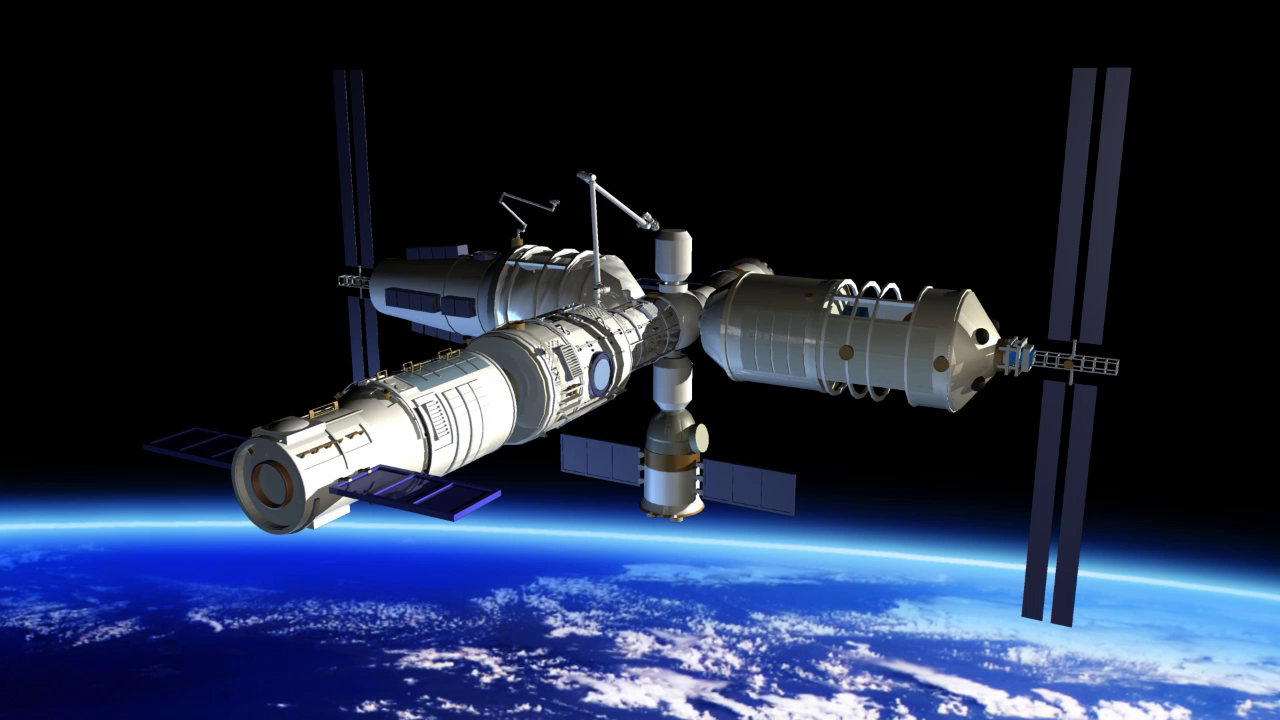China is going to launch the Tyangun-2 station into orbit in 2016

In 2016, China plans to launch the Tiangong-2 space laboratory into space. This launch will be the first in a relatively long lull in the space program of China . After the launch of “Tyangun-1”, nothing was heard about the country's plans to send people into orbit. 2014 and 2015 have passed without sending Chinese astronauts, but now it seems that everything can change.
Unfortunately, the preparation of the Tiangun-2 project is taking place behind closed doors - China has never particularly advertised its actions in the framework of the work on the space program. But now it has become known that Tyangun-2 is still planning to send into orbit. Here will be used the basic module, which is included in the configuration of "Tiangun-1." This is a small module, where there are two beds. Most likely, 3 people will be sent to orbit, so one will have to stay awake and wait for their turn to sleep. There is one more peculiarity - in the "Tyangun-2" a regenerative life-support system will be used.
Most likely, the Chinese engineers will change the docking stations, but these changes will not be dramatic. The launch of the station into orbit will be carried out using the Long March 2F / G launch vehicle. This is a modified rocket, which was previously used to send Chinese astronauts into space. Interestingly, Tiangong-2 will receive only one team, unlike its predecessor, Tyingong-1, which was visited by two Chinese teams.
')
As for people, they will be sent into orbit with the help of the Shenzhou 11 spacecraft. Most likely, the orbital station will receive three inhabitants at once, one of whom will be an experienced cosmonaut, and one will be a novice. Perhaps the newcomers will be both other members of the space team of China. The station also plans to send the first Chinese space truck Tianzhu (Tianzhou). The launch of the ship will be carried out with the help of a Long March 7 launch vehicle - while it has not flown anywhere yet, this will be the first experience.
"Tianzhu" will be docked with "Tyangun-2" after the astronauts go to Earth. Perhaps the Chinese goal is to dock, which will indicate the success of the mission and the reliability of the technologies used by China. Maybe the engineers are planning to conduct some kind of experiments. In any case, while this is not known.
Actually, all the current work within the framework of the Tiangong program is intended to prepare for the implementation of a much larger project - the creation of the Chinese space station, which will be created in Earth orbit by 2022. Now the Chinese are trying out various life support systems at work, as well as some other technological innovations. If all goes well, these technologies will be used to create the station.

There are a few more questions that the Chinese do not cover. For example, it was previously announced that another space laboratory, Tyangun-3, would be launched. Will this stage of the program be completed, or abandoned? If so, what are the tasks facing the project team? While there is no information on this issue.
It remains to wait for more data from official sources.
Source: https://habr.com/ru/post/366307/
All Articles